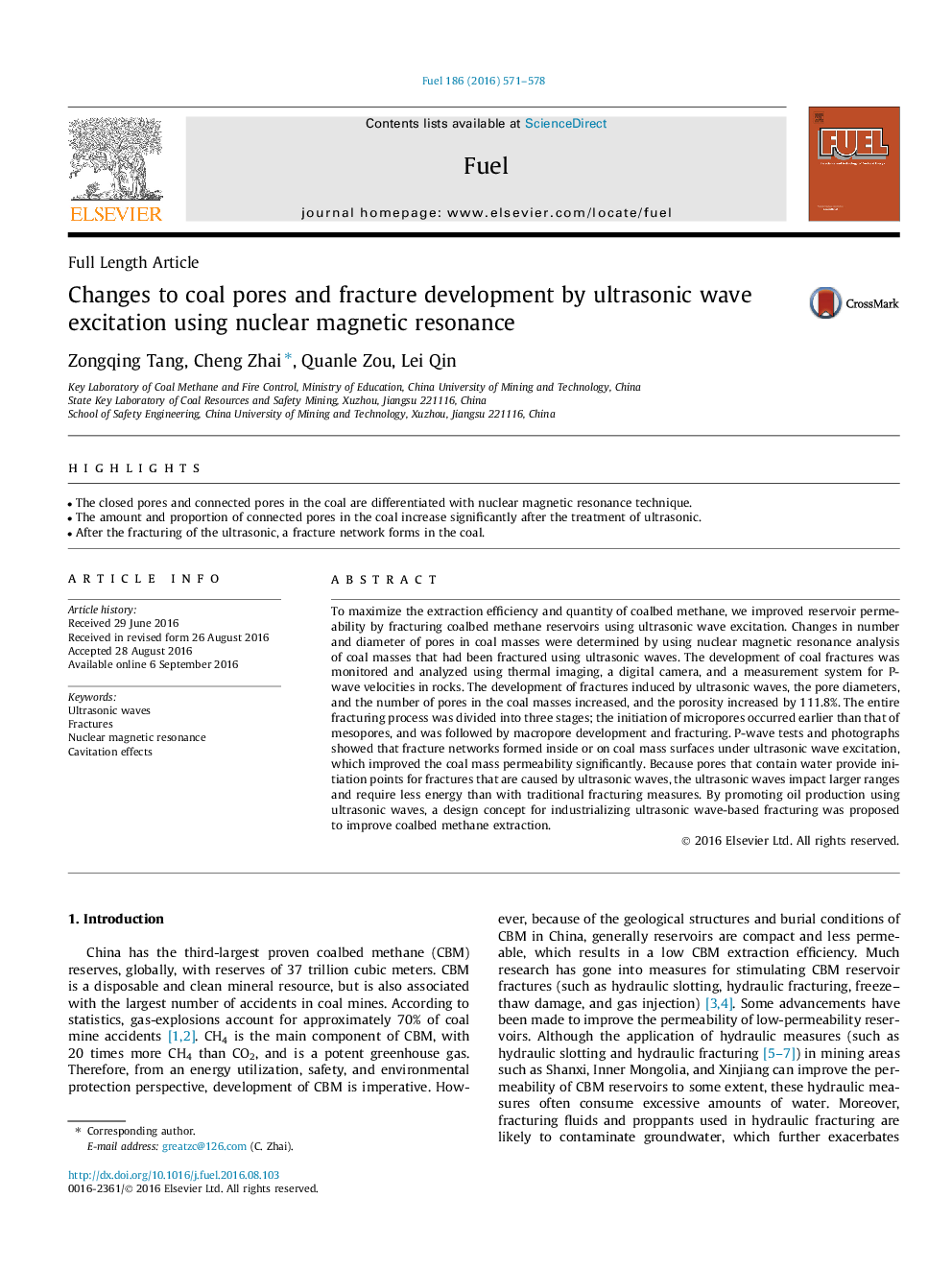| Article ID | Journal | Published Year | Pages | File Type |
|---|---|---|---|---|
| 6476145 | Fuel | 2016 | 8 Pages |
â¢The closed pores and connected pores in the coal are differentiated with nuclear magnetic resonance technique.â¢The amount and proportion of connected pores in the coal increase significantly after the treatment of ultrasonic.â¢After the fracturing of the ultrasonic, a fracture network forms in the coal.
To maximize the extraction efficiency and quantity of coalbed methane, we improved reservoir permeability by fracturing coalbed methane reservoirs using ultrasonic wave excitation. Changes in number and diameter of pores in coal masses were determined by using nuclear magnetic resonance analysis of coal masses that had been fractured using ultrasonic waves. The development of coal fractures was monitored and analyzed using thermal imaging, a digital camera, and a measurement system for P-wave velocities in rocks. The development of fractures induced by ultrasonic waves, the pore diameters, and the number of pores in the coal masses increased, and the porosity increased by 111.8%. The entire fracturing process was divided into three stages; the initiation of micropores occurred earlier than that of mesopores, and was followed by macropore development and fracturing. P-wave tests and photographs showed that fracture networks formed inside or on coal mass surfaces under ultrasonic wave excitation, which improved the coal mass permeability significantly. Because pores that contain water provide initiation points for fractures that are caused by ultrasonic waves, the ultrasonic waves impact larger ranges and require less energy than with traditional fracturing measures. By promoting oil production using ultrasonic waves, a design concept for industrializing ultrasonic wave-based fracturing was proposed to improve coalbed methane extraction.
